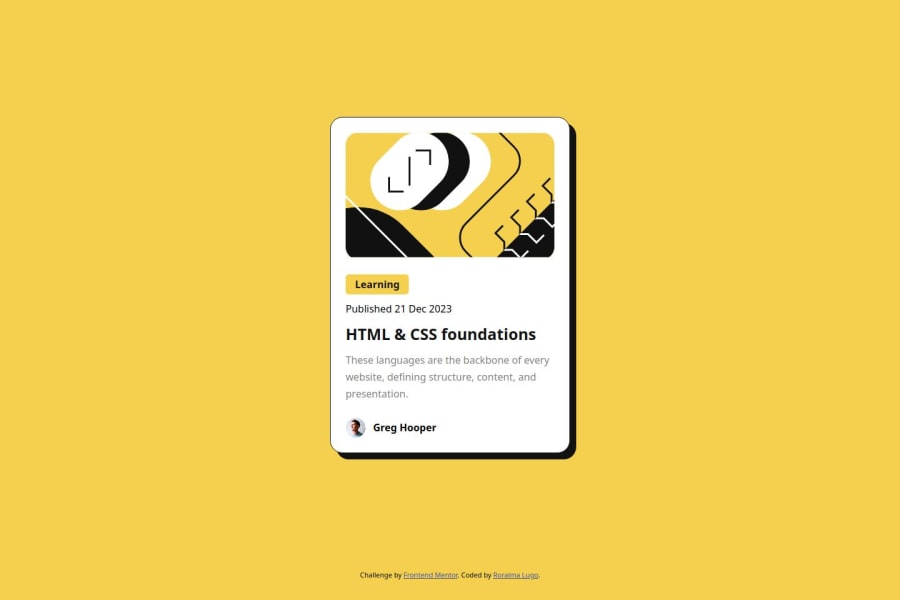
Design comparison
SolutionDesign
Solution retrospective
What are you most proud of, and what would you do differently next time?
Thanks to Figma's design, I think I managed to make the design as accurate as possible.
What challenges did you encounter, and how did you overcome them?This design is very good for those who are taking their first steps as a developer. For me it was relatively easy.
What specific areas of your project would you like help with?I am ok
Community feedback
Please log in to post a comment
Log in with GitHubJoin our Discord community
Join thousands of Frontend Mentor community members taking the challenges, sharing resources, helping each other, and chatting about all things front-end!
Join our Discord
